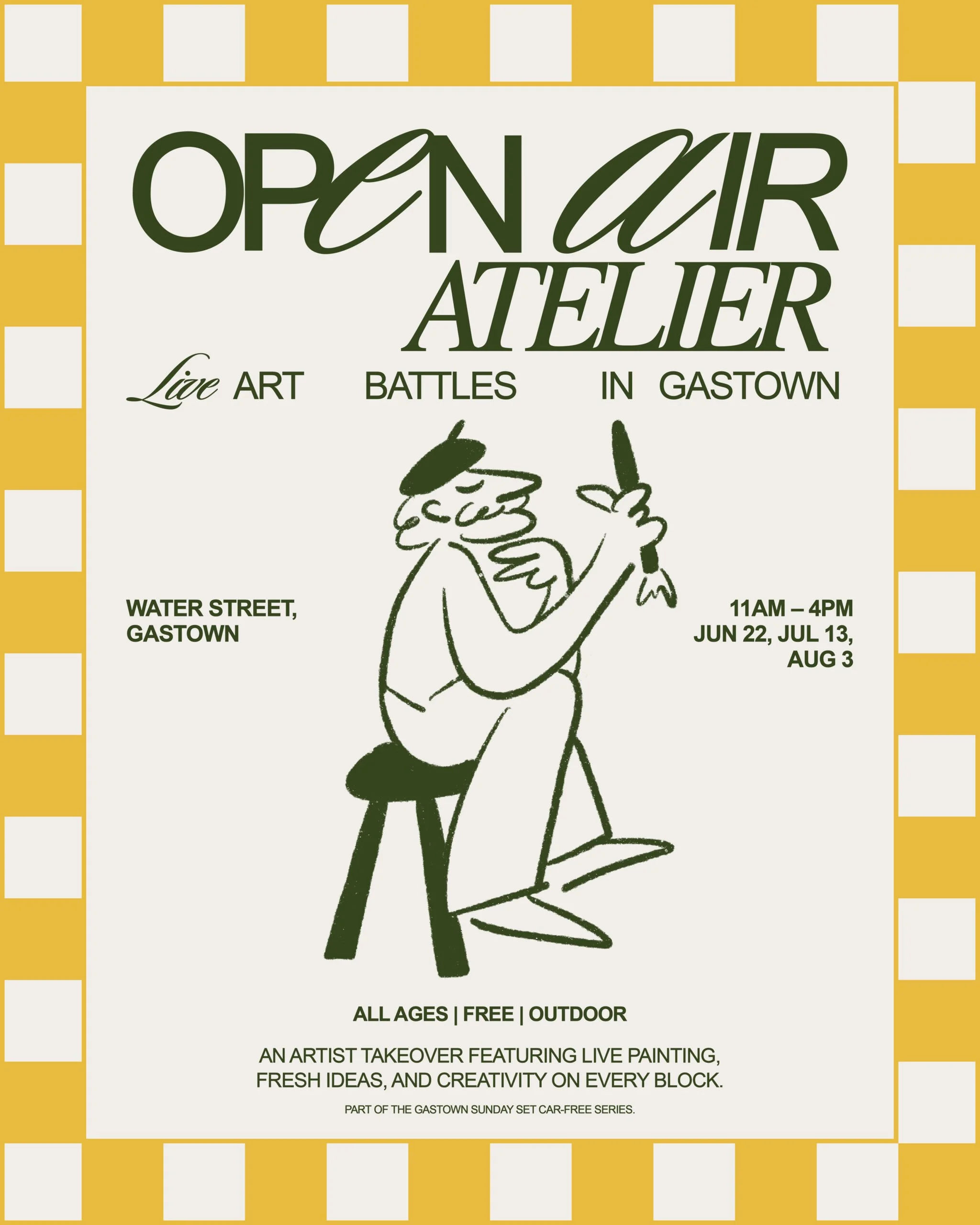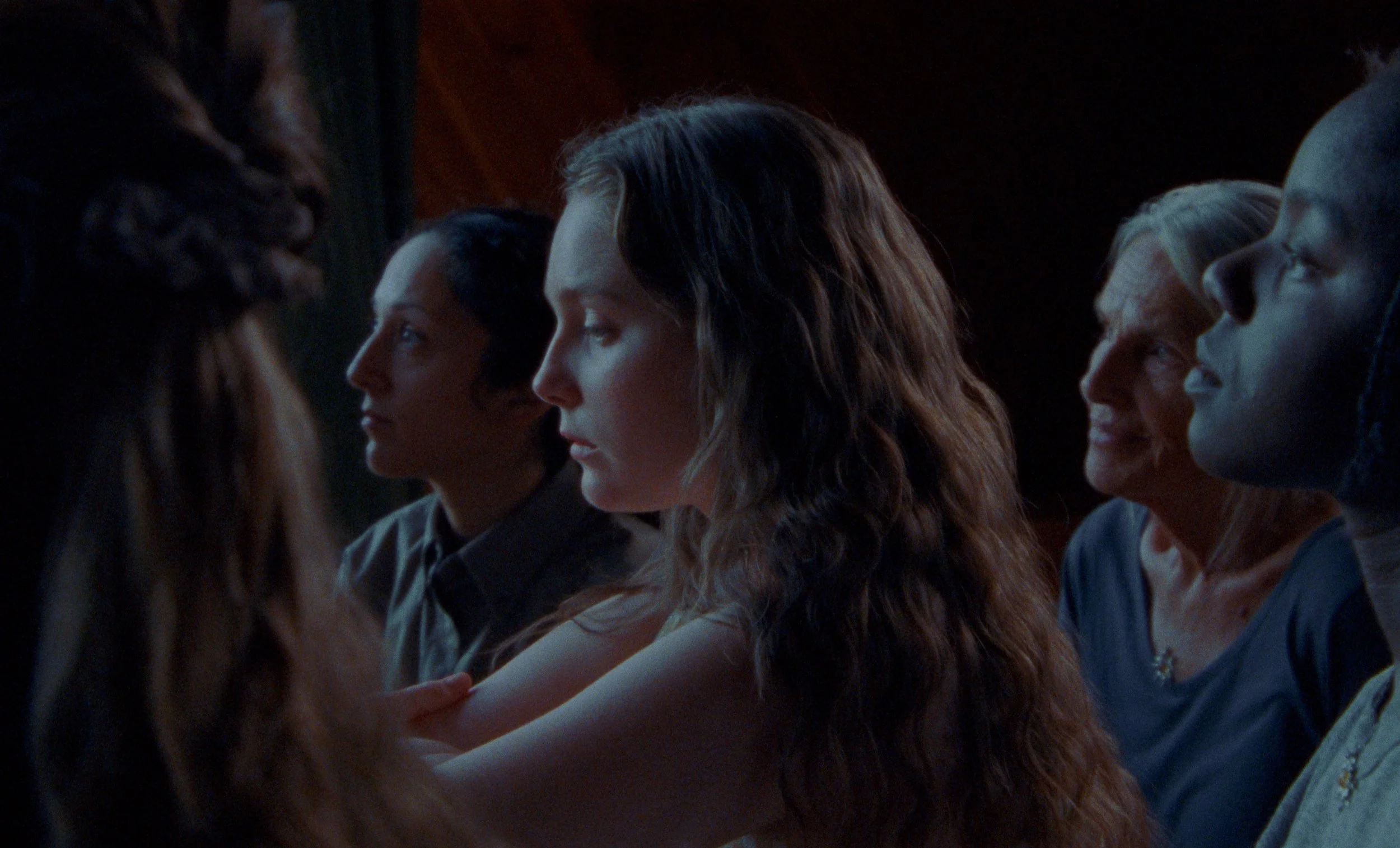Sell Out, A Series: 5 Questions with Afuwa
/Sell Out is a series by interdisciplinary artist Angela Fama (she/they), who co-creates conversations with individual artists across Vancouver. Questioning ideas of artistry, identity, “day jobs,” and how they intertwine, Fama settles in with each artist (at a local café of their choice) and asks the same series of questions. With one roll of medium format film, Fama captures portraits of the artist after their conversations.
Afuwa (she/her) is an artist and arts worker. Born in Lokono, Karinya, and Akawaio lands (Georgetown, Guyana), Afuwa has lived and worked on the territories of the xʷməθkʷəyəm, Sḵwxwú7mesh, and səlilwətaɬ Nations for two decades. Her practice unravels colonial legacies of location and embodiment. Follow her on Instagram (@afuwapaints), or visit her at 221A.
Location: Rise Up Marketplace
What do you make/create?
I started out as a painter in Guyana. I was lucky enough to study separately with two really amazing painters, Doris Eseoghene Rogers and George Simon. I left Guyana to study goldsmithing at the Edna Manley College in Jamaica. It’s really funny that years later, when I picked up painting again, I could see the things that they had taught me were still present in my body. This was a really lovely and sweet way to have them with me because they have both passed.
I studied painting, and goldsmithing, and then I came to Canada and started painting again. Painting always feels like this place I come back to. I love the sound of the brush hitting the canvas. It feels very resonant, like a drum. It’s my sweet spot.
Now I also do more installations, like set pieces. I was recently in a show at the Vancouver Art Gallery, called Vancouver Special: Disorientations and Echo, where I was able to make this beautiful spider web with the voices of Tonye Aganaba and Marci T. House that resonated through the strings of the web. There was a vessel in the middle of it, fabric that I had written on, covered with ink, painted and added to, and there was also a painting. Painting is like the base, and then everything else is added on to that.
What do you do to support that?
One of the things that I realised as I was working as an artist is that art schools didn’t prepare me in some very significant ways for existing in the world - so, I ended up studying accounting. I felt like this would be an actual divide in my life, where I would go do this thing, and then do my art. What actually ended up happening is that everybody I knew in the arts was like: “You do accounting? Please, talk to me!” I didn’t expect that, yet, at the same time, I was the only artist in the accounting class.
There were so many ideas that were completely foreign to me. After four years of school, I was like: “Artists should know how to budget. They should understand simple interest, compound interest, how to manage taxes and finances. How to actually live and continue to create art.” And so, I found myself still in the arts, which is wonderful, and unexpected, and I’m really happy about that.
I’ve worked with direct social services and arts non-profits, pretty much entirely non-profits. A year and a half ago, I became the associate director of an organization called 221A. This really allows me to see all the parts of my life coming together because what 221A does is strategically try to support artists in every aspect of creation. We have studios that are basically a direct cost model, so, however much the garbage disposal, heat, electricity costs, we divvy it up by how much space there is and literally just pass those costs on to the artist. We take on the lease, and, because we’re non-profit, we’re not adding anything to that.
In creating spaces for artists to work, having programs where artists are paid a living wage, and basically all our staff are artists, it feels like this coalescence of the practical and creative magic that allows you to be in the world. It’s the work to be doing.
Describe something about how your art practice and your “day job” interact.
When people say, “What do you do for art?”, I feel like there’s this imagined schism between the two—like that Cartesian idea of this is the mind/this is the body - and for me, there is no division. I’m really inspired by artists like Tomson Highway who studied music, wrote plays and novels, and was a social worker in Indigenous communities. Throughout his life, he has been fully present in what he was doing as part of the arc of living a creative life - and so, I don’t see this as separate, because what informs my work at 221A are all the things I’m wanting to change as an artist. There isn’t one without the other. It feels very much like a jigsaw-ing together in whatever I do, like how the care that I learnt as a goldsmith translated into what I do in accounting. It just gels.
What’s a challenge you’re facing, or have faced, in relation to this and/or what’s a benefit?
Time is always a challenge. I could spend my whole life doing the work that I’m doing at 221A, and, at the same time, I feel that way about making art. How you spend your time is how you spend your life and they’re both valuable, exciting, joyful and necessary. Artists in Vancouver need somewhere to live, they need somewhere to work, they need to be treated respectfully and honored as carriers of a collective vision - but then there’s also my vision as well. I’m learning to balance that, yet I also feel like I’ll always be learning.
Have you made, or created, anything that was inspired by something from your day job? Please describe.
What my day job has taught me is how much more you can do when you gather together. I feel like some art is very solitary. Writing can be very solitary. Painting can be very solitary. Not all writers and painters are, but working in an organization like 221A, where you’ve got people who are doing specialized things that interlock to create a functioning whole, has really made me aware of the nuance of conversation and being able to do things together that you can’t do alone.
I have a show coming up in 2025 at Centre A that I’m doing with a couple of artist friends: sound artist Nina Yañez and painter jaz whitford. I want it to be this conversation that the three of us are having, because I feel like I have things to say, but I also just want it to be a conversation about how we are, and how we create, in the world. I don’t think I was there before - I felt like solo shows were very normative in the art world - and now I’m just like: “No, it needs to be all of our voices.”
Angela Fama (she/they) is an artist, Death Conversation Game entrepreneur, photographer, musician, previous small-business server of many years (The Templeton, Slickity Jim’s etc.). They are a mixed European 2nd-generation settler currently working on the unceded traditional territory of the Coast Salish xʷməθkwəy̓əm, Skwxwú7mesh and Səl̓ílwətaʔ/Selilwitulh Nations.
Follow them at IG @angelafama IG @deathconversationgame or on their website www.angelafama.com









